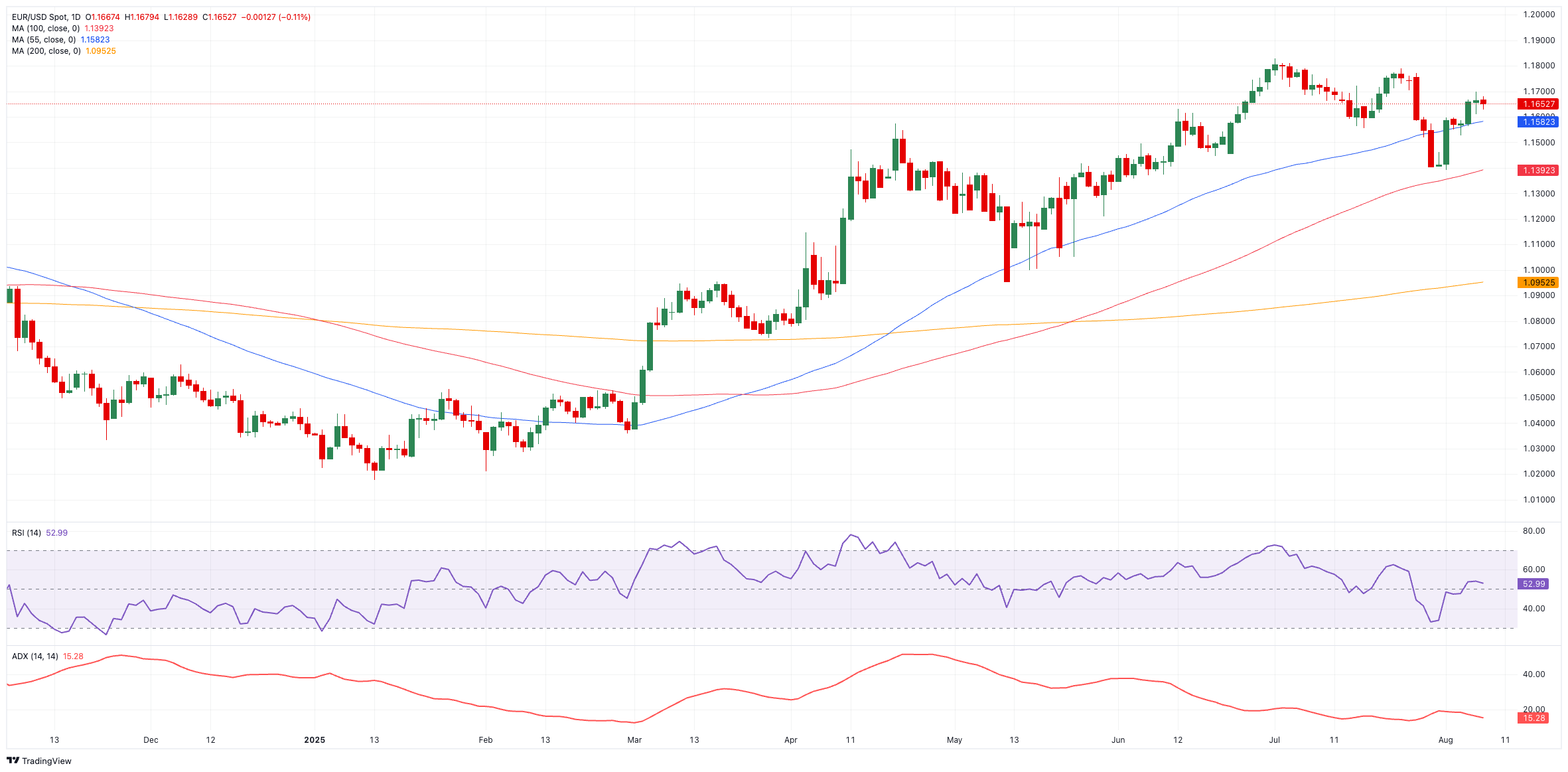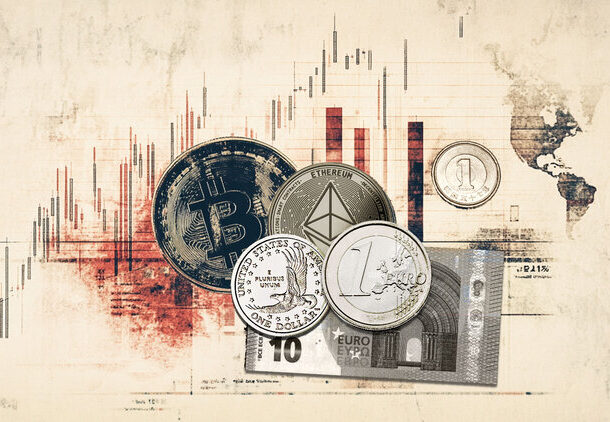
- EUR/USD regained the smile this week, approaching the 1.1700 barrier.
- The Greenback lost momentum on the back of trade and Fed jitters.
- US inflation data will be the next salient event on the calendar.
In the last few days…
The Euro (EUR) successfully recovered from its previous week’s losses against the US Dollar (USD). Indeed, EUR/USD traded with an upside bias throughout the week, briefly flirting with the key resistance in the 1.1700 region just to ease some ground as the week drew to an end.
The pair’s decent gains came exclusively from the Greenback’s dynamics amid muted dockets on both sides of the Atlantic, while the resurgence of trade concerns via fresh tariffs kept investors watchful over their potential impact on the US economy.
A fleeting trade truce
Initial euphoria over the fresh US–EU accord — cutting most levies on European goods to 15% from the threatened 30% — has already faded. Aerospace, semiconductors and farm products escaped the tariff net, yet steel and aluminium still face 50% duty.
In exchange, Europe agreed to buy $750 billion worth of US energy, raise defence orders, and channel more than $600 billion into American investments.
Berlin and Paris were unimpressed: German Chancellor Friedrich Merz warned the deal pinches an already fragile industrial base, while French President Emmanuel Macron called it “a dark day” for the continent.
Adding to the sour environment, on August 7, President Trump’s “reciprocal” tariffs on imports from 69 partners took effect, lifting duties to between 10% and 41% within a week and threatening tougher measures against Russia if the war in Ukraine drags on.
In fact, by August 12, President Trump must also decide whether to extend the truce with Beijing; letting it lapse would see tariffs snap back to triple-digit rates and risk reigniting a full-blown trade war.
Central banks stay on hold
The Federal Reserve (Fed) left policy unchanged at the end of July with Chair Jerome Powell sounding cautious even as Governors Waller and Bowman dissented.
In relation to the Fed, President Trump has nominated Stephen Miran, who is currently the Chairman of the Council of Economic Advisors, to replace FOMC Governor Adriana Kugler. Miran will serve on the FOMC until January 31, 2026, while the search for a permanent replacement continues.
Meanwhile, FOMC Governor Christopher Waller seems to be among the preferred candidates for succeeding Chief Jerome Powell at the Fed.
Across the Atlantic, European Central Bank (ECB) President Christine Lagarde described growth as “solid, if a little better,” yet money markets now pencil in the first rate cut for spring 2026, all following the central bank’s steady hand at its latest gathering.
Positioning shifts
When it comes to positioning, the Commodity Futures Trading Commission’s (CFTC) latest report through July 29 saw non-commercial net longs in the single currency drop to three-week lows around 123.3K contracts, while institutional net shorts (usually hedge funds) slipped to about 175.8K. Following this weekly pullback, net longs in the Euro remain at levels last seen in late 2023. Furthermore, open interest fell for the first time in six weeks, reaching nearly 828.6K.
Technical picture
Resistance is found at the weekly top of 1.1788 (July 24), followed by the 2025 high of 1.1830 (July 1). Beyond that lies the September 2021 peak of 1.1909 (September 3) before the psychological 1.2000 line.
Support starts at the August trough of 1.1391 (August 1), which is propped up by the interim 100-day SMA, ahead of the weekly floor at 1.1210 (May 29).
Momentum gauges are mixed: the Relative Strength Index (RSI) remains near 54, hinting at further upside potential, while an Average Directional Index (ADX) near 18 still signals an inconclusive trend.
EUR/USD daily chart

Short-term outlook
The perception of a politicised and more dovish Fed may begin to exert pressure on the US Dollar, potentially leading to a further upward impulse in EUR/USD. Regarding trade, a genuine thaw in tensions could spark some range-bound trade, as this scenario is seen as generally benefiting both the European and US economies.
ECB FAQs
The European Central Bank (ECB) in Frankfurt, Germany, is the reserve bank for the Eurozone. The ECB sets interest rates and manages monetary policy for the region. The ECB primary mandate is to maintain price stability, which means keeping inflation at around 2%. Its primary tool for achieving this is by raising or lowering interest rates. Relatively high interest rates will usually result in a stronger Euro and vice versa. The ECB Governing Council makes monetary policy decisions at meetings held eight times a year. Decisions are made by heads of the Eurozone national banks and six permanent members, including the President of the ECB, Christine Lagarde.
In extreme situations, the European Central Bank can enact a policy tool called Quantitative Easing. QE is the process by which the ECB prints Euros and uses them to buy assets – usually government or corporate bonds – from banks and other financial institutions. QE usually results in a weaker Euro. QE is a last resort when simply lowering interest rates is unlikely to achieve the objective of price stability. The ECB used it during the Great Financial Crisis in 2009-11, in 2015 when inflation remained stubbornly low, as well as during the covid pandemic.
Quantitative tightening (QT) is the reverse of QE. It is undertaken after QE when an economic recovery is underway and inflation starts rising. Whilst in QE the European Central Bank (ECB) purchases government and corporate bonds from financial institutions to provide them with liquidity, in QT the ECB stops buying more bonds, and stops reinvesting the principal maturing on the bonds it already holds. It is usually positive (or bullish) for the Euro.
Information on these pages contains forward-looking statements that involve risks and uncertainties. Markets and instruments profiled on this page are for informational purposes only and should not in any way come across as a recommendation to buy or sell in these assets. You should do your own thorough research before making any investment decisions. FXStreet does not in any way guarantee that this information is free from mistakes, errors, or material misstatements. It also does not guarantee that this information is of a timely nature. Investing in Open Markets involves a great deal of risk, including the loss of all or a portion of your investment, as well as emotional distress. All risks, losses and costs associated with investing, including total loss of principal, are your responsibility. The views and opinions expressed in this article are those of the authors and do not necessarily reflect the official policy or position of FXStreet nor its advertisers. The author will not be held responsible for information that is found at the end of links posted on this page.
If not otherwise explicitly mentioned in the body of the article, at the time of writing, the author has no position in any stock mentioned in this article and no business relationship with any company mentioned. The author has not received compensation for writing this article, other than from FXStreet.
FXStreet and the author do not provide personalized recommendations. The author makes no representations as to the accuracy, completeness, or suitability of this information. FXStreet and the author will not be liable for any errors, omissions or any losses, injuries or damages arising from this information and its display or use. Errors and omissions excepted.
The author and FXStreet are not registered investment advisors and nothing in this article is intended to be investment advice.








